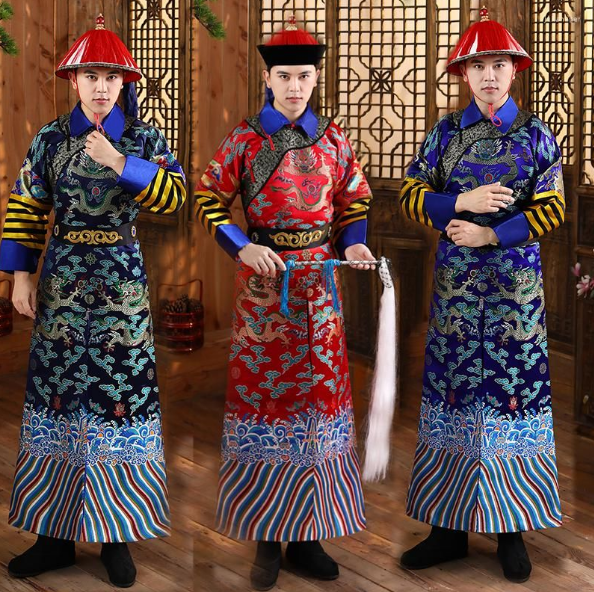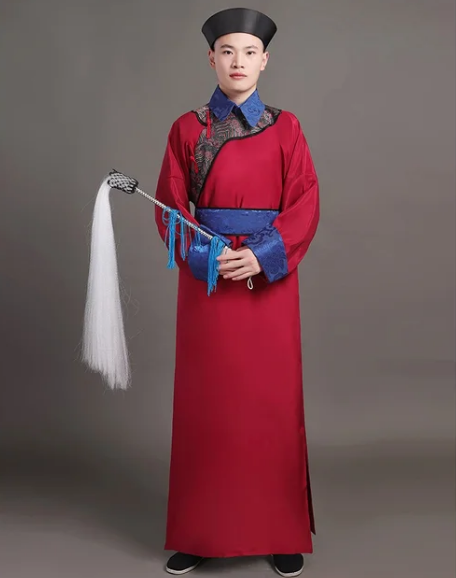Historical Context of Ancient Eunuchs
Origins and Roles in Ancient Societies
Ancient eunuchs, often holding unique societal positions, served as guardians in royal harems and trusted court officials. Their presence dates back to ancient civilizations, notably in China, Egypt, and the Ottoman Empire. They played pivotal roles, acting as intermediaries between the ruling class and common people. Eunuchs’ influence extended beyond administrative duties to encompass guidance in royal matters, thereby securing a place in historical narratives.
Influence on Fashion and Culture
Eunuchs significantly impacted the fashion and cultural landscape of their time. Their distinct attire symbolized their unique status, often blending elements of both gender-specific fashions. This blending of styles influenced broader fashion trends, leading to the adoption of similar designs by the non-eunuch population. Furthermore, their involvement in cultural events, from palace ceremonies to public festivals, allowed them to introduce and popularize new fashion aesthetics across various strata of society.
For further details on the historical significance and roles of ancient eunuchs, their fashion impact, and broader cultural influence, you can explore relevant Wikipedia pages. These pages provide comprehensive information on the subject, contributing to a deeper understanding of their enduring legacy.

Eunuch Attire Through the Ages
Evolution of Eunuch Costumes
Over centuries, eunuch costumes have undergone significant transformations, reflecting changes in societal norms and aesthetics. Initially, these costumes mirrored the attire of the ruling class, often luxurious and elaborately decorated. As time progressed, the attire evolved to be more subdued, yet retained distinctive elements that signified their unique status. This evolution marked a shift from ostentatious displays of wealth to a more understated elegance, aligning with changing perceptions of modesty and decorum in various societies.
Regional Variations in Dress
Eunuch attire varied greatly across different regions, reflecting local cultural and fashion influences. In the Ottoman Empire, eunuchs often wore turbans and caftans, rich in color and texture, symbolizing their high rank. Contrastingly, in Imperial China, their attire was more uniform and less ornate, aligning with the Confucian ideals of simplicity and humility. These regional variations not only highlight the diversity in eunuch fashion but also underscore the influence of local customs and traditions on their dress.
To gain deeper insights into the historical evolution of eunuch costumes and their regional variations, you may find it beneficial to visit the Wikipedia page on eunuchs. This resource offers detailed information on the subject, enhancing your understanding of the rich tapestry of eunuch fashion across different ages and cultures.
Symbolism and Significance of Eunuch Garments
Symbolic Meanings in Fabric and Design
Eunuch garments often carried deep symbolic meanings, reflected in their choice of fabric and design. Luxurious silks and fine linens, frequently used in their attire, signified a high status within the court. The colors and patterns chosen were not mere fashion statements but rather a reflection of their roles and positions. For instance, certain colors like deep blues and purples often denoted loyalty and trustworthiness, traits highly valued in eunuch courtiers. Similarly, intricate embroidery could symbolize the eunuch’s connection to the royal family or their specific duties within the palace.
Social Status and Dress Code
The dress code for eunuchs was a crucial indicator of their social status. While their attire set them apart from ordinary citizens, it also differentiated among eunuchs themselves based on rank and favor. Those in higher positions wore more elaborate and finely crafted garments, signaling their proximity to power. This hierarchy in dress code not only established a visual distinction among eunuchs but also reinforced the structured nature of the society they served in.
For a more comprehensive understanding of the symbolism and significance of eunuch garments, exploring related topics on Wikipedia can be quite enlightening. These pages delve into the intricate details of their attire, offering a glimpse into the rich cultural and historical context that shaped their fashion.
Fabrication and Design Elements
Materials and Techniques Used
Artisans used various materials and techniques to craft eunuch garments. Silk, valued for its smooth texture and sheen, was a popular choice, often sourced from renowned silk-producing regions. Embroidery, a common technique, involved intricate handwork, adding depth and elegance to the garments. The use of gold and silver threads in embroidery was not uncommon, especially for higher-ranking eunuchs, signifying wealth and prestige. Additionally, dyeing techniques were crucial in achieving vibrant colors, with natural dyes derived from plants and minerals.
Iconic Features and Accessories
Eunuch attire included several iconic features and accessories that were both functional and symbolic. Wide belts, often embellished with precious stones, served as status symbols while also being practical. Headwear varied significantly, with turbans and caps being prevalent, often reflecting the eunuch’s cultural background. Jewelry, such as rings and necklaces, was selectively used, sometimes indicating the eunuch’s personal taste or the favor they enjoyed from their superiors. These accessories not only complemented their attire but also conveyed subtle messages about their role and standing within the court.
To delve deeper into the fabrication and design elements of eunuch garments, including the materials, techniques, and iconic features, exploring resources on Wikipedia can provide valuable insights. These pages offer detailed information on the artistry and cultural significance behind the creation of these unique garments.
Comparative Study with Contemporary Attire
Contrasts with Civilian Clothing of the Era
Eunuch attire often starkly contrasted with the civilian clothing of their time. Civilian dress typically reflected practical needs and social standings, favoring simpler designs and materials. Eunuchs, on the other hand, wore more elaborate and fine clothing, often featuring luxurious fabrics like silk and intricate embroidery. This contrast was not just in material but also in color and ornamentation, highlighting the distinct social status of eunuchs compared to the general populace.
Similarities with Modern Fashion Trends
Interestingly, some elements of eunuch attire find echoes in modern fashion trends. The layered robes and tunics of eunuchs, for instance, can be seen in contemporary oversized and layered fashion. Similarly, the use of vibrant colors and detailed embroidery in eunuch clothing has parallels in today’s high-fashion garments. These similarities suggest a timeless quality to certain aspects of eunuch fashion, underscoring its influence on modern design aesthetics.
Exploring the Wikipedia page related to eunuchs can provide a broader perspective on their attire, offering a context for understanding its significance in contrast to contemporary civilian clothing and its influence on modern fashion trends.

Preservation and Legacy
Efforts in Preserving Ancient Eunuch Costumes
Museums and cultural institutions worldwide have undertaken significant efforts to preserve ancient eunuch costumes. These efforts include meticulous restoration processes, where experts carefully repair and maintain the delicate fabrics and embroidery. Additionally, modern preservation techniques, like controlled environments and specialized display cases, play a crucial role in preventing deterioration. Such initiatives not only safeguard these historical garments but also provide future generations with a tangible connection to the past.
Influence on Modern Costume Design and Performing Arts
The influence of ancient eunuch attire extends into modern costume design and performing arts. Contemporary designers often draw inspiration from the intricate patterns and flowing silhouettes of these historical garments. In performing arts, especially in historical dramas and operas, costumes inspired by eunuch attire add authenticity and depth to the visual storytelling. This enduring influence highlights the timeless appeal and cultural significance of these garments.
For further exploration into the preservation and legacy of ancient eunuch costumes, including their impact on modern design and performing arts, visiting the Wikipedia page on eunuchs can provide extensive insights. These resources shed light on the ongoing efforts to preserve these historical garments and their lasting influence on contemporary fashion and culture.